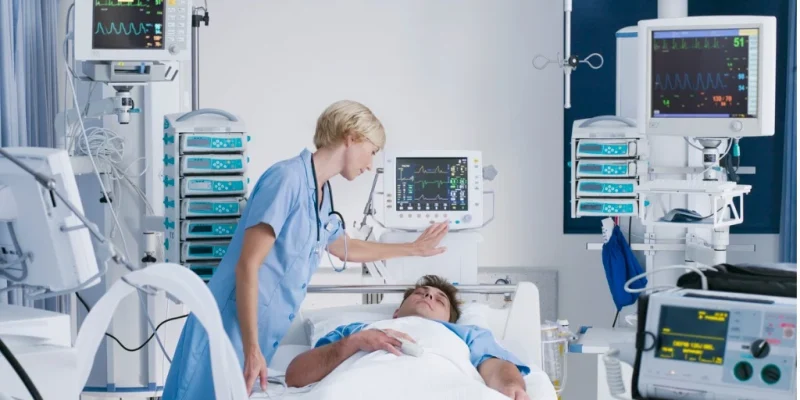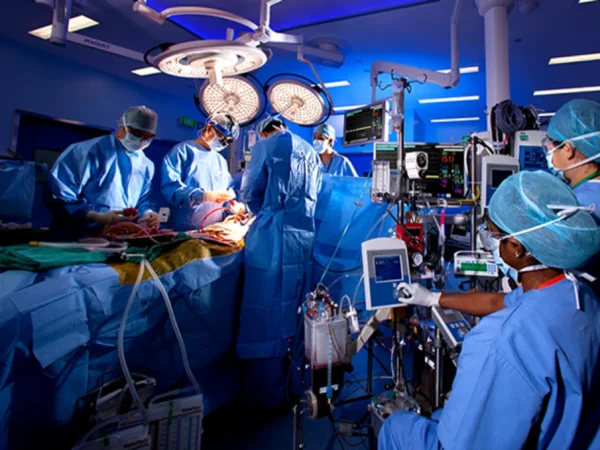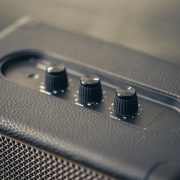Medical Capital Equipment: A Complete Guide to Healthcare’s Essential Investments

In the fast-evolving world of healthcare, medical capital equipment plays a pivotal role in diagnosing, treating, and monitoring patients. These high-cost, long-term investments are the backbone of modern hospitals, clinics, and diagnostic centers, ensuring effective patient care and operational efficiency.
This article provides an in-depth look at medical capital equipment, including examples, purchasing tips, and trends shaping the industry.
What Is Medical Capital Equipment?
Medical capital equipment refers to high-value medical devices and machinery used in healthcare settings. These items are typically durable, require significant investment, and are intended for long-term use in patient care and treatment.
Key Features of Medical Capital Equipment
- High Cost: Often exceeding thousands or millions of dollars.
- Durability: Built for long-term use, typically lasting several years.
- Purpose: Used for diagnostic, therapeutic, or monitoring purposes.
Examples of Medical Capital Equipment
Here are common examples of capital equipment found in healthcare facilities:
Diagnostic Imaging Equipment
- CT Scanners: Capture detailed cross-sectional images of the body.
- MRI Machines: Provide high-resolution images of soft tissues and organs.
- X-Ray Machines: Used for quick imaging of bones and certain tissues.
Surgical Equipment
- Operating Tables: Adjustable tables for performing surgeries.
- Surgical Robots: Advanced systems for minimally invasive procedures.
- Anesthesia Machines: Deliver precise doses of anesthesia during surgeries.
Patient Monitoring Devices
- ECG Machines: Monitor heart activity.
- Vital Signs Monitors: Track blood pressure, oxygen levels, and more.
- Infusion Pumps: Regulate the delivery of fluids and medications.
Laboratory Equipment
- Blood Analyzers: Test blood samples for various conditions.
- Microscopes: Essential for pathology and microbiology labs.
- Sterilizers: Ensure instruments are free of contaminants.
Life Support Systems
- Ventilators: Assist patients with breathing.
- Dialysis Machines: Used for patients with kidney failure.
- Defibrillators: Restore normal heart rhythms during emergencies.
Importance of Medical Capital Equipment in Healthcare
Improves Patient Care
High-quality equipment enables accurate diagnoses, effective treatments, and better patient outcomes.
Enhances Efficiency
Modern devices streamline processes, reducing time and improving operational efficiency.
Supports Advanced Treatments
Technological advancements in medical capital equipment allow for minimally invasive procedures and cutting-edge therapies.
Builds Trust and Reputation
Facilities with advanced equipment are seen as more reliable, attracting more patients and referrals.
How to Choose Medical Capital Equipment
Investing in medical capital equipment requires careful consideration. Here are steps to make an informed decision:
Define Your Needs
- Identify the purpose and specific requirements for the equipment.
- Consult with healthcare professionals to prioritize patient care needs.
Consider Total Cost of Ownership (TCO)
- Evaluate upfront costs, maintenance, and operational expenses.
- Include installation, training, and service contracts in your budget.
Evaluate Performance and Features
- Compare equipment based on accuracy, speed, and reliability.
- Look for certifications or compliance with healthcare standards.
Check Vendor Reputation
- Choose reputable manufacturers and suppliers with strong customer support.
- Read reviews and seek recommendations from industry peers.
Plan for Scalability
- Opt for equipment that can be upgraded or integrated with new technologies.
- Ensure compatibility with existing systems in your facility.
Trends in Medical Capital Equipment
The medical capital equipment market is constantly evolving, influenced by technological advancements and healthcare demands.
Artificial Intelligence (AI) Integration
AI-powered devices, such as diagnostic imaging systems, enhance accuracy and speed in detecting conditions.
Portable and Compact Equipment
Portable X-ray machines, ultrasound devices, and monitors are gaining popularity for home care and emergency use.
Remote Monitoring Capabilities
Telemedicine solutions are driving demand for equipment that supports remote patient monitoring.
Sustainability in Healthcare
Eco-friendly equipment with lower energy consumption and recyclable components is becoming a priority.
Cloud Connectivity
Many devices now integrate with cloud platforms for real-time data sharing and analysis.
Costs and Financing for Medical Capital Equipment
Upfront Costs
Medical capital equipment often requires significant upfront investment, ranging from tens of thousands to millions.
Financing Options
- Leasing: Spread payments over time while accessing the latest technology.
- Loans: Obtain financing through banks or specialized medical equipment lenders.
- Grants: Research grants and funding programs for healthcare facilities.
Maintenance and Service Contracts
Budget for regular maintenance to ensure equipment longevity and performance.
Tips for Maintaining Medical Capital Equipment
Proper maintenance ensures that your investment lasts for years and delivers optimal performance:
Follow Manufacturer Guidelines
Adhere to the manufacturer’s maintenance schedule and operational recommendations.
Train Staff
Ensure all users are properly trained to operate the equipment safely and efficiently.
Conduct Regular Inspections
Perform routine checks to identify and address potential issues early.
Partner with Certified Technicians
Work with authorized service providers for repairs and maintenance.
Conclusion
Medical capital equipment is a cornerstone of modern healthcare, enabling facilities to deliver advanced care and improve patient outcomes. Whether it’s diagnostic imaging systems, surgical tools, or patient monitors, investing in the right equipment requires careful planning, research, and financial management.
By staying updated on trends, understanding your facility’s needs, and choosing reliable vendors, you can ensure your investment supports efficient and effective healthcare delivery.
Ready to upgrade your healthcare facility? Start by evaluating your capital equipment needs today!
FAQs
1. What is medical capital equipment?
Medical capital equipment refers to high-value, durable medical devices used for diagnosis, treatment, or patient care in healthcare settings.
2. How is capital equipment different from medical supplies?
Capital equipment is long-lasting and high-cost, while medical supplies (e.g., gloves, syringes) are disposable and lower-cost.
3. How do hospitals afford expensive medical equipment?
Hospitals often use financing options like leasing, loans, or grants to manage costs.
4. What factors should I consider when buying medical capital equipment?
Evaluate the equipment’s cost, performance, scalability, and vendor reputation.
5. What is the lifespan of medical capital equipment?
Most equipment lasts between 5–15 years, depending on usage and maintenance.
Also read: Final Print Issue: Everything You Need to Know About the Last Edition of a Publication











